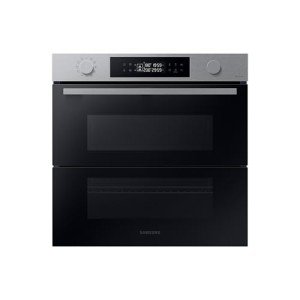The Rise of Built-In Ovens: A Seamless Approach to Modern Cooking
In contemporary kitchens, where style aesthetic appeals blend perfectly with functionality, one home appliance sticks out as a real game changer: the built-in oven. As property owners and chefs alike continue to look for innovative solutions that boost their cooking experience, built-in ovens have actually become significantly popular. integrated oven hob & extractor packages out the advantages, factors to consider, and patterns surrounding built-in ovens, highlighting why they are a necessary feature in contemporary cooking spaces.
What is a Built-In Oven?
A built-in oven is a kitchen device designed to be integrated into the cabinetry of a kitchen instead of standing alone. Unlike traditional freestanding ovens, which can be moved and placed anywhere, built-in ovens been available in different designs and sizes to fit specifically within designated spaces. Offered in single or double configurations, these ovens use a streamlined look that complements contemporary kitchen designs.
Advantages of Built-In Ovens
1. Space-Saving Design
Among the most enticing advantages of built-in ovens is their space-saving style. By incorporating the oven into kitchen cabinetry, you can release up important counter and floor area. This is particularly helpful in smaller sized kitchens, where optimizing room is necessary. Built-in ovens can be installed at eye level, making them more available and reducing the requirement to bend down.
2. Aesthetic Appeal
Built-in ovens contribute to a sleek and cohesive cooking area style. Offered in numerous surfaces-- such as stainless steel, black, white, and custom kitchen cabinetry-- they can blend effortlessly into the general decor. This aesthetic appeal improves the kitchen area's visual harmony and elevates the area, developing a modern and advanced atmosphere.
3. Enhanced Functionality
Lots of built-in ovens come geared up with advanced cooking technologies, such as convection cooking, steam ovens, and clever functions. These enhancements permit versatile cooking alternatives, making it easier to achieve professional-level results in your home. Smart built-in ovens can even link to Wi-Fi, enabling users to manage the oven remotely, get notices, and access a range of cooking programs and dishes.
4. Improved Ventilation
Because built-in ovens can be integrated with kitchen area hoods and ventilation systems, they can assist keep better air quality and reduce cooking odors. This is specifically substantial for those who enjoy to cook with aromatic spices and ingredients, as an effective ventilation system can keep the kitchen area comfortable and inviting.
5. Modification Options
Built-in ovens offer a large range of personalization choices to suit private cooking designs and requirements. From professional-grade devices with multiple cooking modes to compact designs for smaller sized kitchen areas, homeowners can select the oven that fits their specific requirements. Many manufacturers also use customizable front panels, enabling you to match the oven's appearance to your cabinetry for a genuinely combined look.

Considerations When Choosing a Built-In Oven
While built-in ovens have many advantages, there are essential factors to consider to remember before making a purchase:
1. Rate
Built-in ovens normally come with a higher cost than their freestanding counterparts due to their style and setup requirements. It's essential to factor in both the cost of the oven and any extra expenditures connected to cabinets adjustments or installation.
2. Setup Requirements
Setting up a built-in oven frequently needs professional assistance, especially if you need to modify existing cabinetry. Make sure that you think about any expenses related to setup, consisting of labor and potential cabinetry modifications.
3. Size and Dimensions
Before acquiring a built-in oven, measure the designated space accurately to ensure a correct fit. Built-in ovens been available in different sizes and setups, so selecting one that aligns with your needs and kitchen area style is essential.
4. Lifestyle and Usage
Consider your cooking habits and requires when selecting a built-in oven. If you regularly host big gatherings, a double oven might be more beneficial. On the other hand, if you have a compact cooking area, a single-wall oven might be adequate.
Patterns in Built-In Ovens
The kitchen area device market is constantly progressing, and built-in ovens are not exempt from emerging patterns. Some current trends consist of:
Smart Technology Integration: With the increase of smart home innovation, built-in ovens now often feature connectivity options. This allows users to keep an eye on cooking progress and change settings by means of mobile apps.
Energy Efficiency: As sustainability ends up being a concern, numerous manufacturers are purchasing energy-efficient built-in ovens that decrease energy usage while maintaining efficiency.
Multi-functional Designs: Built-in ovens now offer functions such as air frying, slow cooking, and steaming, offering adaptability that meets a large range of cooking approaches.
Conclusion
Built-in ovens unquestionably represent a perfect mix of design, function, and convenience in today's cooking areas. As oven integrated select this modern-day solution, the focus shifts to producing a cooking space that is as visually pleasing as it is useful. Whether you are constructing a new home or remodeling your kitchen area, considering a built-in oven could raise your cooking experience and transform your cooking area into a stylish and functional sanctuary. With a variety of alternatives available and continuous developments in innovation, built-in ovens remain a standout option for both beginner cooks and cooking enthusiasts alike.
